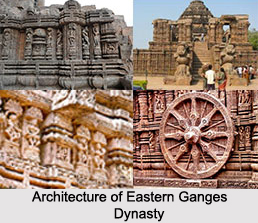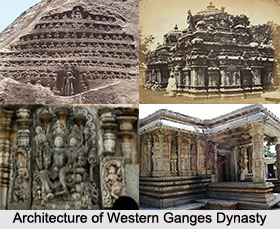 Ganga Dynasty of medieval India had a considerable influence on the land of Odisha, Tamil Nadu, Karnataka, Kerala and Andhra Pradesh. Ganga Dynasty are divided into Eastern Ganges Dynasty and Western Ganges Dynasty
Ganga Dynasty of medieval India had a considerable influence on the land of Odisha, Tamil Nadu, Karnataka, Kerala and Andhra Pradesh. Ganga Dynasty are divided into Eastern Ganges Dynasty and Western Ganges Dynasty
A look into the historical pages reveal that the imperial Ganga rulers who were ruling from Kalinga Nagara had conquered the Kesaris and other ruling clans and had assumed power over a large territory extending from River Ganga in the north to Godavari River in the south and from Bay of Bengal in the east to the high lands in the west.
Western Ganga Dynasty
Western Ganga Dynasty was significant ruling dynasty of ancient Karnataka. Western Ganga Dynasty lasted from about 350 to 1000 AD. They are known as Western Ganga to distinguish them from the Eastern Ganga Dynasty who in later centuries ruled over Kalinga.
Sovereignty of Western Ganga Dynasty
The sovereignty of Western Ganga Dynasty lasted from about 350 to 550 AD, initially ruling from Kolar and later, moving their capital to Talkad on the banks of the Kaveri River in modern Mysore district of Karnataka.
Eastern Ganges Dynasty
 In order to rule their kingdom from an advantageous position the powerful Ganga rulers had shifted their capital from age-old Kalinganagara to Cuttack in the year 1135 A.D. They ruled over the vast kingdom for a period of one hundred years.
In order to rule their kingdom from an advantageous position the powerful Ganga rulers had shifted their capital from age-old Kalinganagara to Cuttack in the year 1135 A.D. They ruled over the vast kingdom for a period of one hundred years.
Rulers of Ganges Dynasty
The rulers of the Ganga Dynasty were not only conquerors and able administrators but also great patrons of religion, religious institutions, art and architecture as attested by the construction of a number of magnificent temples. During their period the art of temple building had reached its zenith of its glory.
Religion of Ganges Dynasty
The Ganga rulers were at first staunch Shaivites as attested by a large number of copper plates and inscriptions. But since the time of Anantavarma Chodagangadeva the Ganga rulers changed their faith from Shaivism to Vaishnavism. They made huge land grants to Vedic scholars and temples. Gifts were mostly made to Vishnu temples and Vaishnavite Brahmins. The sudden change of faith on the part of such powerful rulers is ascribed to the learned preaching of Vaishnavism by Ramanuja who had flourished in the period of the Ganga rulers.
Power in Eastern India
The most powerful ruler of this dynasty was Anantavarma Chodagangadeva. Learned in the Vedas he had also mastered the fine arts. He had built the temple of Madhukeswar at Mukhalingam and the famous shrine of Lord Jagannath at Puri.
Inscriptions of Eastern Ganges Dynasty
The inscription of Chodaganga at Mukhalingam reveals his love and patronage of dancing. The king provided the temple of Mukhalingam with the services of dancing and singing by the deva ganikas or the devdasis. These duties of the temple during the time of Chodagangadeva were performed by both males and females of selected family. It is said that the introduction of devganika or devdasis for musical performances in the temple seems to have been accomplished after the disciples of Ramanuja established their seat of religion in the temple of Sri Kurmam under the support of Chodagangadeva. The same system was afterwards introduced in the Jagannath Temple of Puri.
Inscriptions of Western Ganges Dynasty and Eastern Ganga Dynasty
Even the Telegu batch of dancing girls was brought to the temple of Jagannath by Chodagangadeva. The son of Chodagangadeva, Rajaraja Deva II had appointed twenty dancing girls for service in the temple of Jagannath as testified by the Madala Panji.
Hence it is evident that the Vaishnavite rulers were not antagonistic to the tradition of ritual dance that grew up under the spell of Shaivism rather they venerated, patronised and institutionalised it.
Related Articles
Odisha
History of Odisha
Ganga Dynasty
History of India
Indian Culture



















